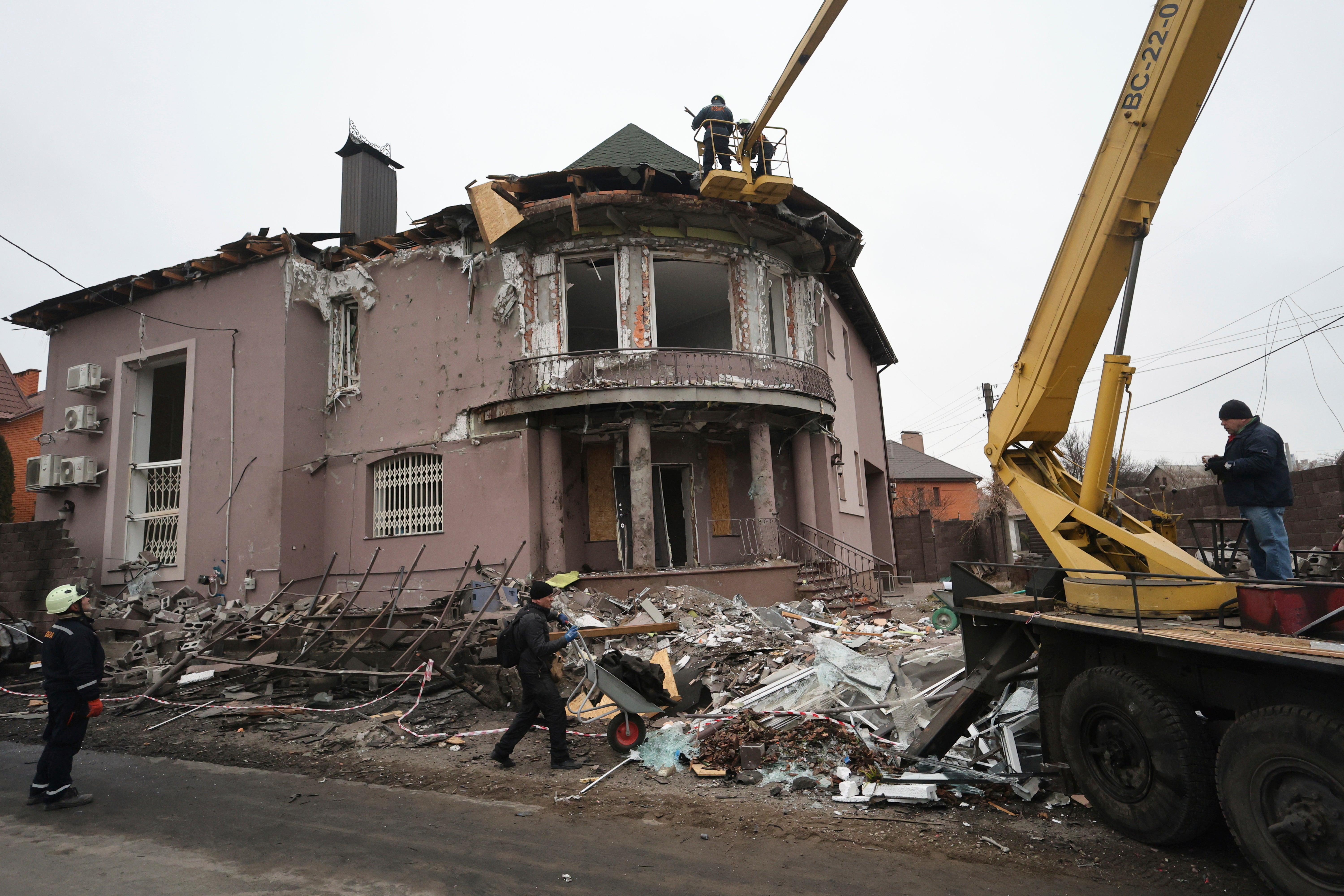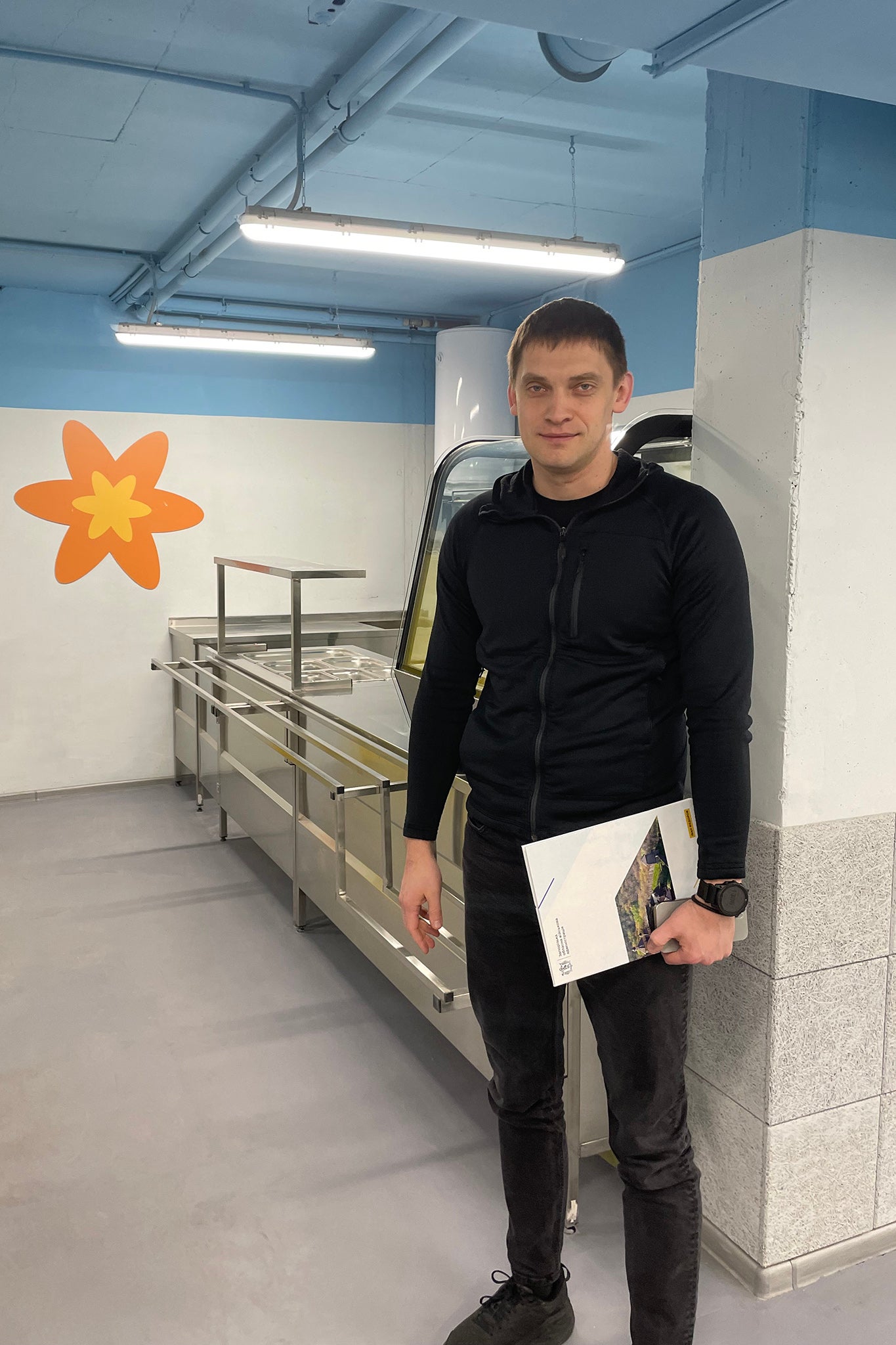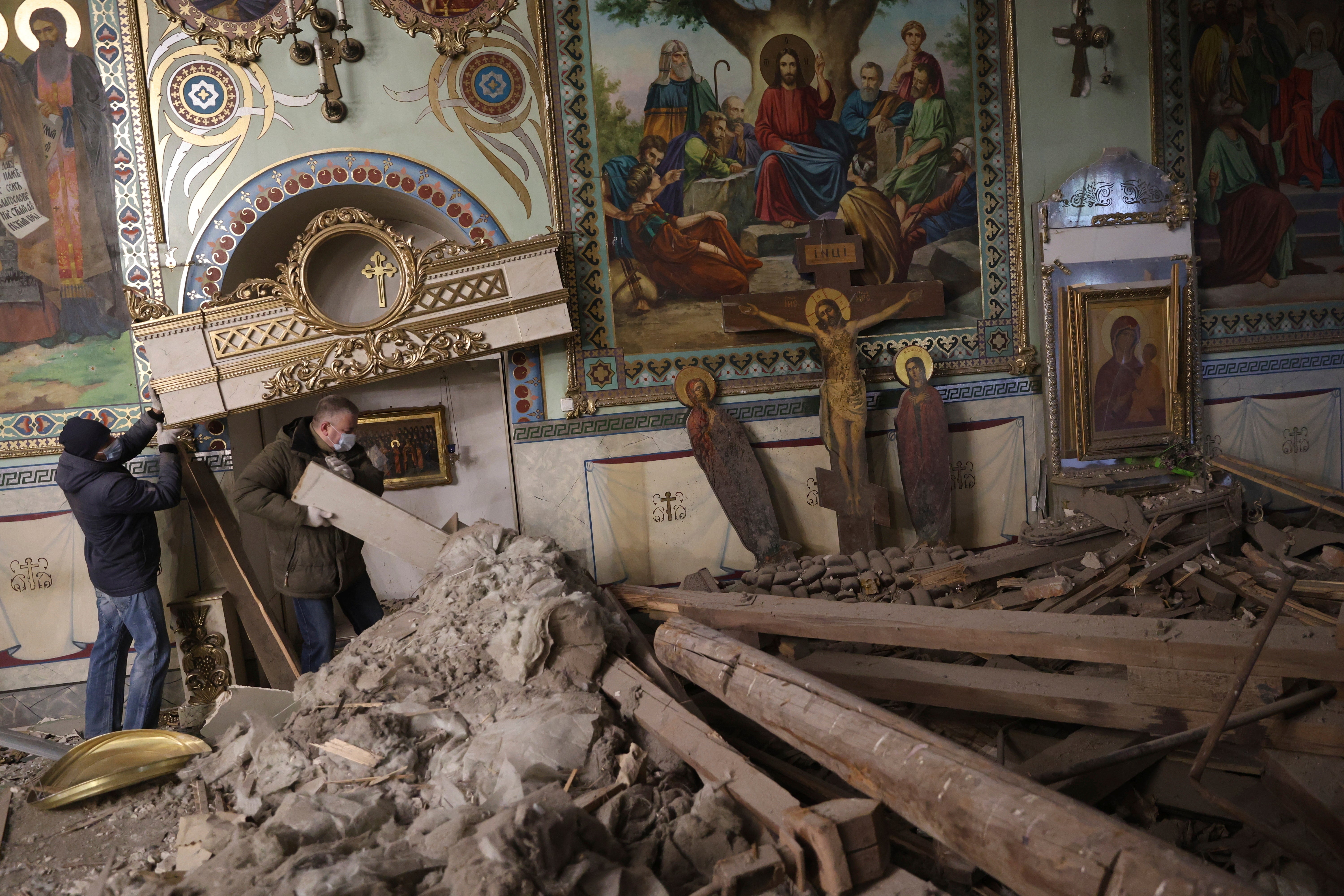At first glance it is a wasteland, a barren plot of earth in a city caught up in some of the most vicious fighting between Russia and Ukraine.
As missiles, drones and glide bombs terrorise the residents of Zaporizhzhia near the eastern front, it does not seem possible that any semblance of normal life can carry on.
But, seven metres underground, the ground has been hollowed out to create a fully fledged school for 1,000 pupils. With only discrete entrances and a ventilation unit above ground, students rotate through the reinforced bunker daily.
The school, which has been open little more than a week, lies in one of the few parts of the south eastern region of Zaporizhzhia that has not been occupied by the Kremlin’s forces since the first days of Russian leader Vladimir Putin’s full-blown invasion in February 2022.
As part of the original onslaught, the Russians seized Europe’s largest nuclear power plant and Putin exploits the facility, packed with Russian soldiers and tanks, as nuclear blackmail – his terrifying Sword of Damocles hovering over the continent.
As 2025 began, the Zaporizhzhia region faced a brutal uptick in Moscow’s attacks. The eponymous capital witnessed Russian ballistic missile strikes on the city and saw how its inhabitants remain unbowed and determined never to surrender.
Shops and businesses remain open along its bustling avenues and Zaporizhzhia is a crucial industrial hub, particularly in the production of steel, aluminium, and other metals.
As night falls in the short winter days, lights sparkle along the seven miles of the city’s main Sobornyi Prospekt, one of Europe’s longest streets.
But the peaceful scene is illusory. On just one night over the past month, Moscow launched 400 air and ground attacks against Ukrainian military positions and population centres in the region according to its governor, Ivan Fedorov.
Aerial attacks against the city, targeting mostly civilian sites, produce regular tragedies. One Russian “glide bomb” attack on January 8 killed 13 civilians and injured some 30.
At the new school – designed to withstand conventional and nuclear attacks – headteacher Valentyna Yerashova says it is taking its pupils and name from an existing school, the Zaporizhzhia Sich Collegium, judged too vulnerable to Russian attacks.
“Only schools with air raid-shelters have the right to operate,” she tells The Independent. “I want to believe that the war will end soon but, for now, this is the future of schools in Ukraine.”
Yerashova says her pupils can resume lessons in a “real” environment, and importantly, will once more be able to mingle and socialise with other young people.
Half the pupils, aged six to 18, will be taught in morning lessons and the other 500 in the afternoon. In the event of an attack, 1,500 people can gather safely at the building which still smells of fresh paint.
-Head-teacher-Valentyna-Yerashova-(l)-with-MP-Oleksandr-Vasiuk-at-the-new-underground-school-in-Za.jpeg)
“Even after this phase of the war ends, Russia will always be there and there can always be a threat. And here you can always use this space wisely – for school, for the playground, for everything.
“We are somewhat optimistic, we want to believe that it will definitely come in handy. We have to believe, have hope.
“Despite the terror the Russians try to inflict on Zaporizhzhia, we are gathering strength here, strength is in our land and strength is now education.”
With increased attacks on the city, Russian forces are edging westward towards Zaporizhzhia as they try to bypass Pokrovsk in neighbouring Donetsk region, which Ukraine’s military command says has, for months, seen the heaviest fighting along the 600 miles of frontlines.
Moscow has been desperate to capture it for more than a year. But they have faced fierce Ukrainian resistance and lost thousands of troops weekly. Now they may be trying to envelop Pokrovsk rather than attack head-on and some battles rage only 20 miles from Zaporizhzhia.
Having captured Enerhodar nuclear power plant 50 miles south west of the city, the possibility the Russians would precipitate a catastrophe that generated radioactive pollution or even a meltdown, terrifies Ukrainians still haunted by the 1986 Chernobyl nuclear accident in their country, the world’s largest civilian nuclear disaster.
Member of the Ukrainian parliament for Zaporizhzhia, Oleksandr Vasiuk, said: “If the plant is damaged due to shelling or military actions, there could be a radioactive leak, leading to massive contamination in Ukraine and neighboring countries.

“The Zaporizhzhia nuclear plant is located on the Dnipro River, a crucial water resource for Ukraine and several neighboring states. Radiation contamination of this river could affect not only Ukraine but also Russia, Belarus, Moldova, and other European countries.”
The Russians forced Ukrainian scientists and engineers to keep operating the plant. Moscow eventually allowed the UN and the International Atomic Energy Authority to inspect the plant and its six reactors have been closed down.
But Moscow has ignored pleas by the international experts that all military forces vacate the facility to reduce the risk of a catastrophe and the potential for disaster remains.
Periodically the Russians claim Ukrainian shells or drones have struck nearby. The Ukrainians deny those allegations and say the Russians cause the explosions themselves in order to keep the perceived threat level high.
Fedorov told The Independent: “Of course we know that nobody can predict what the Russians will do and this is a great threat. We understand that when you have full control [of the nuclear facility] and when you want to kill as many citizens as possible, as Putin has tried to do these past three years, we know that this dangerous situation grows each day then nobody knows what we can expect.”
Aiding the war effort is the most important task, but for Fedorov keeping the city as close as possible to normality is another key priority.

He says the city’s population is between 750-800,000, the same as the pre-war figure. “But the composition has changed because today every fifth resident of the city of Zaporizhzhia is an internally displaced person (IDPs or Ukrainian refugees) as the city became an evacuation hub since the full-scale invasion.”
Fedorov says that the longer the war continues the less of those who fled abroad are likely to return to Ukraine. He says people long to return to their hometowns but that is not enough “because residents will not return to a wasteland.”
Rather than wait until the conflict is over, he believes rebuilding the parts of the city that have been destroyed by Russian attacks now is essential to encourage people back. He is proud that a quarter of the 1800 buildings damaged by the Russians have already been restored.
But he is sceptical about prospects for peace, despite talk of a ceasefire negotiated by US President Donald Trump, and says Ukraine has to be prepared for the long haul.
Member of parliament Vasiuk said: “Our country and every Ukrainian deserve a just peace and I am sure that the international coalition will help achieve this. Most importantly, this must be a peace that guarantees Ukraine’s sovereignty, territorial integrity, and security.
He said that since the beginning of the full-scale invasion Zaporizhzhia has become one of Ukraine’s key strategic centres – a hub for supporting hundreds of thousands of IDPs including with housing, food, and medical care.

It is also an important military bastion whose “successful defence is crucial for the stability of Ukraine’s southern regions and plays a decisive role both in the country’s economic and energy stability.”
During the three days The Independent visited Zaporizhzhia, air raid alarms sound periodically. Hours after speaking to Fedorov and Vasiuk, Russian ballistic missiles struck targets lighting causing a huge blaze that lit up the night sky. Dozens of firemen fought a blaze at an industrial site and ambulances transported the injured from nearby civilian residences.
Talking to police at the scene when Ukrainian anti-aircraft defences opened up on a wave of Russian “killer drones” flying above, one of the policemen says: “We’ve just been ordered out of here and to find a shelter. Please do the same.”
At 4am, the hotel sways as more explosions rocked the same area of the city hit some six hours previously. Fedorov says one man was killed and 16 others including a two-month-old baby, injured. The attack was labelled a “double-tap” type, deliberately designed to kill first responders, as firemen were still tackling the initial blaze.
As curfew ends at 5am, people and traffic again take to the streets in defiant determination to continue with “normality.”
For Vasiuk, it is simple: “I was born and raised in Zaporizhzhia. This is not just a city. It is a heart that continues to beat even in wartime.”




